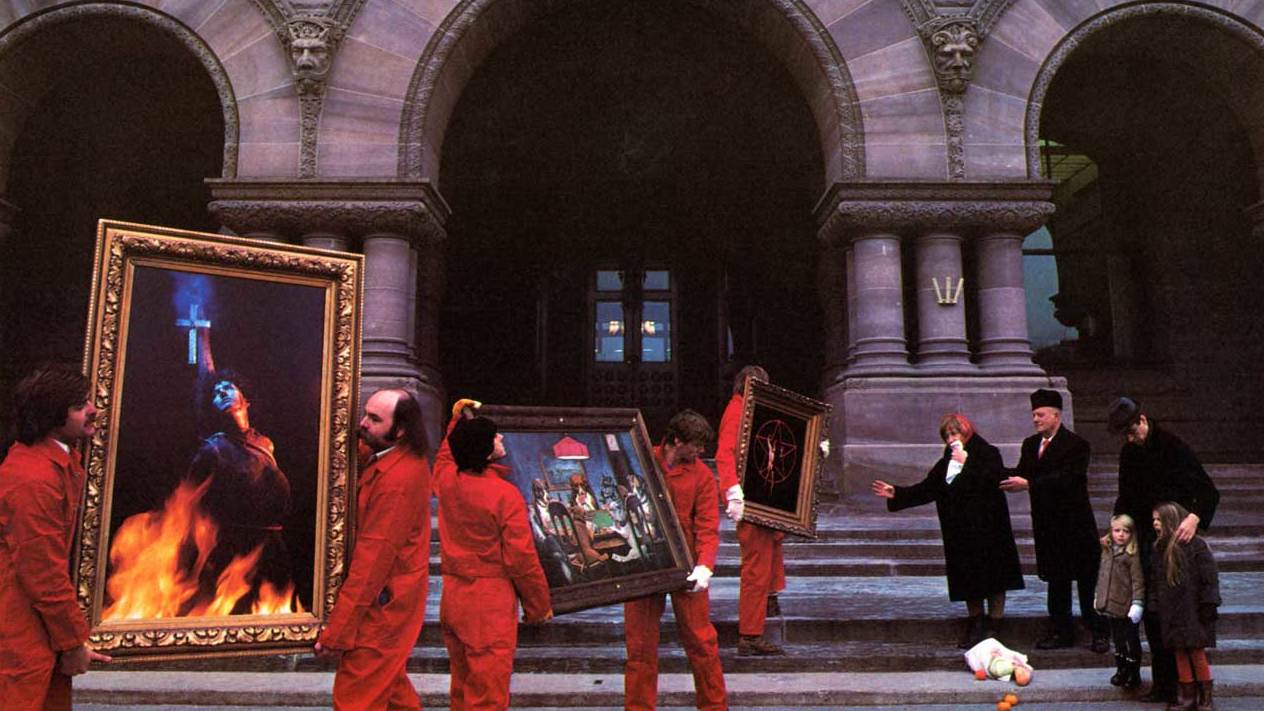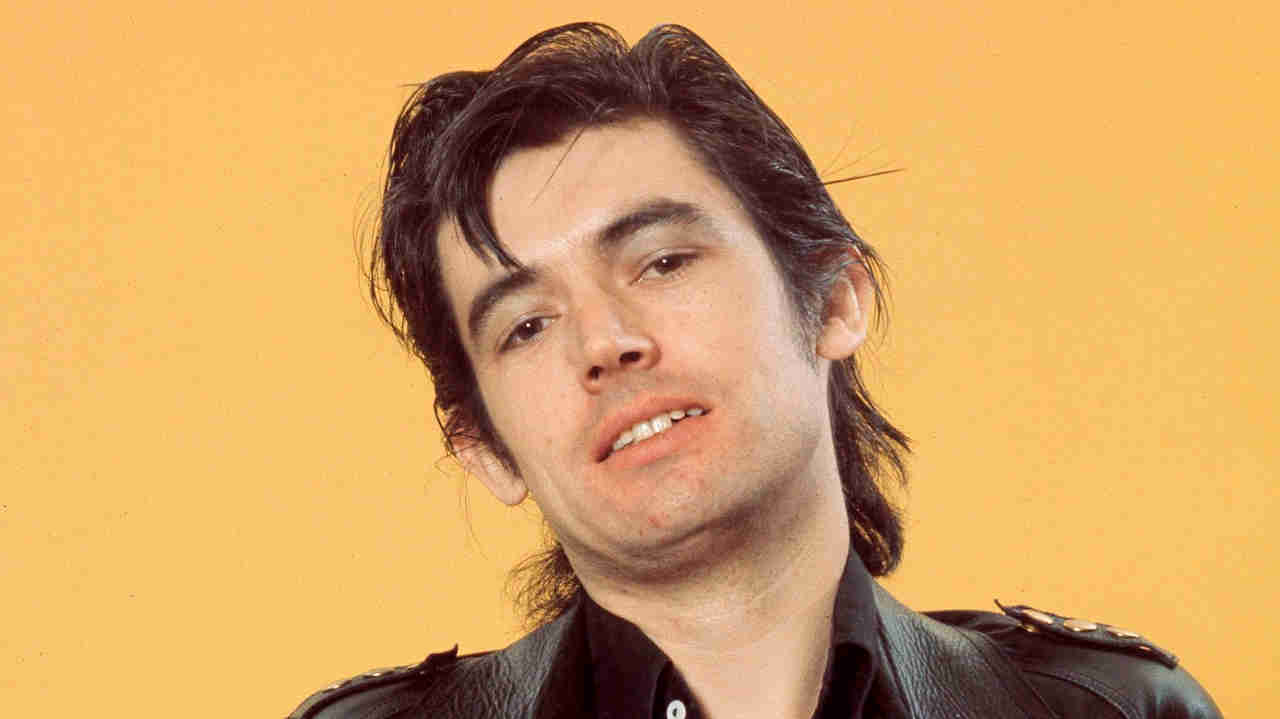Every song on Rush's Moving Pictures, ranked from worst to best
Moving Pictures was the album that turned Rush from a cult progressive rock band into globe-straddling rock titans. Here it is, rearranged from worst to first

Released in 1981, Moving Pictures was a Top 5 hit in the UK and the US and has gone platinum four times over in their native Canada. But it’s a line-in-the-sand Rush album. Moving Pictures, an oddball mix of heavy riffs, new wave shapes and 80s technology, closed the door on the satin kimonos and sci-fi epics that defined Rush in 70s, and embraced a brave new world. But not every song is as good as the one before. Or after...

7. Witch Hunt (Part III Of ‘Fear’)
God bless Rush for reminding their denim-clad fanbase of the evils of fascism and the danger of a mob mentality. That’s more than you’d get from Saxon or Tygers Of Pan Tang in 1981. But the worthy message can’t cover up the uncomfortable truth. Witch Hunt is a nicely bleak interlude on side two of Moving Pictures. But it’s still the least appealing song on the album.
6) The Camera Eye
In the early 80s Rush fans were still coming to terms with the trio’s extensive use of – no! - synthesisers. So it was comforting to see an 11.01-minute song on their new album. But the idea of The Camera Eye, a song about the bustle and madness of city life, is better than the reality.
Sadly, it doesn’t quite sustain the drama and excitement for those 11.01 minutes. I know, because I was shuffling awkwardly in my box fresh denim jacket and feeling a bit bored when they played it at Wembley in November 1981.
5) Vital Signs
The words “Shit! Rush sound like The Police! Oh God, it’s over!” echoed around student sixth-form common rooms when Moving Pictures came out. But Vital Signs is only half-reggae: it jerks and twitches and is too desperately, pallidly white to be the real thing. In fact, Alex Lifeson’s juddering riff and slashing guitar on the fade is vintage Rush. While Geddy Lee’s declaration – ‘Everybody got to deviate from the norm’ – would become Rush’s mission statement in the 80s.
4) YYZ
The beauty of Moving Pictures is that while Rush were dipping toes in reggae and pop, they were still writing tracks like YYZ: a preposterous instrumental whose opening segment sounds like it was nicked off one of those punishing 70s King Crimson albums nobody actually listens to all the way through.
Like La Villa Strangiato, YYZ was built to sate the appetite of bedroom air guitarists/bassists/drummers. And for all its tricksky fills, there’s that moment of sublime, tuneful beauty at 2:53, when the synth kicks on.
Sign up below to get the latest from Classic Rock, plus exclusive special offers, direct to your inbox!
3) Red Barchetta
By 1981 Rush had become masters of the dystopian sci-fi rock song. Where it once took them the whole side of an album (see 2112) to tell the story of a future society where music is outlawed, they’d now got it down to 6:10 minutes. All you need to know about Red Barchetta is that it’s set in a future where motor cars are banned, but where one young rebel borrows his uncle’s ‘old machine’ and gets chased by a bloke in a ‘gleaming alloy air car… two lanes wide’.
It’s brilliantly simple. ‘Ruuuun like the wind as excitement shivers up and down my spine,’ trills Lee, while Lifeson recreates the squeal of tyres and the ‘willing engine’s roar. Like the soundtrack to Top Gear: The Prog Metal Special.
2) Limelight
Thanks to 2010’s peerless documentary, Rush: Beyond The Lighted Stage, we now know that Rush are human beings. Even Neil Peart. We didn’t know that in 1981, because they only existed for two hours on stage or in interviews in Sounds, where they always sounded a bit too serious and suspicious.
Limelight was the first Rush song to let the world in. Its forbidding lyric – ‘I can’t pretend a stranger is a long awaited friend’ – might scream ‘Go away!’ but it’s shot down by the melodic power and beauty of Rush’s first great no-nonsense pop song.
1) Tom Sawyer
Not just the best song on Moving Pictures, but the best Rush song ever. Discuss. Does anyone really know what Tom Sawyer is about (other than Neil Peart)? Who cares. It sounds like Rush are imparting the secret of life. And that’s what counts. Everything about Tom Sawyer is portentous, powerful and of near biblical importance: from Geddy’s hysterical yelp – ‘the riveeeer’ - to Lifeson’s barbed wire guitar solo via Peart’s wrist-spraining drum fills.
There are many great moments in rock, but that synthesised whoosh and bone-rattling bass lick at the start of Tom Sawyer are two of them. All together now: ‘A modern-day warrior, mean mean stride…’
Mark Blake is a music journalist and author. His work has appeared in The Times and The Daily Telegraph, and the magazines Q, Mojo, Classic Rock, Music Week and Prog. He is the author of Pigs Might Fly: The Inside Story of Pink Floyd, Is This the Real Life: The Untold Story of Queen, Magnifico! The A–Z Of Queen, Peter Grant, The Story Of Rock's Greatest Manager and Pretend You're in a War: The Who & The Sixties.

